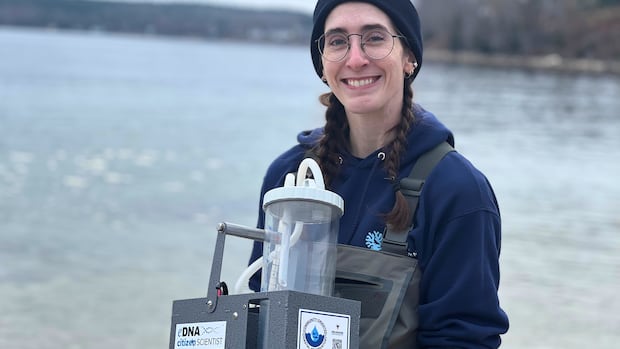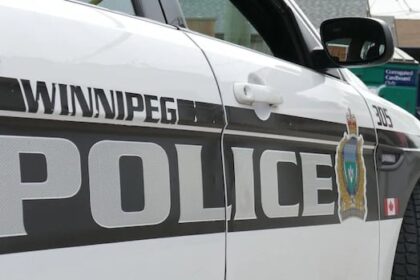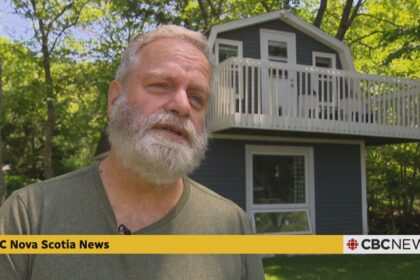Nova Scotia·NewThe Community-Oriented Coastal Observatory needs samples from around the province, so they’re recruiting volunteers just like them to help with this project. ‘Just through their daily natural movement they are shedding DNA,’ says PhD candidateListen to this articleEstimated 3 minutesThe audio version of this article is generated by text-to-speech, a technology based on artificial intelligence.Dalhousie University PhD candidate Samantha Beal, centre, leads a project that brings community members together to gather coastal water samples. (Giuliana Grillo de Lambarri/CBC)On a grey November morning at Fox Point Beach near Hubbards, N.S., five people step into the ocean as waves lap at their knees. They’re there to learn how to collect water samples that will be analyzed at a lab at Dalhousie University for tracking marine species. The Community-Oriented Coastal Observatory needs samples from around the province, so they’re recruiting volunteers just like them to help with the project.Krish Thapar drove from Dartmouth to take part. He listened closely as PhD candidate Samantha Beal explained how to use the sampling equipment and avoid cross-contamination.“I thought this would be a cool volunteer opportunity, so I asked her if we could meet just to learn more about the project,” Thapar said, adding he is also interested in local conservation efforts.Beal is leading the project that brings community members together to gather coastal water samples and send them to the lab. There, she analyzes environmental DNA, or eDNA, to identify traces left behind by marine species.“Just through their daily natural movement [marine species] are shedding DNA,” Beal said. “To collect it, we need to filter the water so the DNA can get stuck to the filter and that is how we actually isolate it.”Krish Thapar is one of the volunteers. (Giuliana Grillo de Lambarri/CBC)Beal’s project aims to create a better understanding of what species live in Nova Scotia waters, and where they go. Research has shown that as ocean water temperatures rise, some species, like lobster, are affected.In some cases, groups of marine animals may start moving north, seeking colder waters, which is what Beal wants to monitor. Beal gives groups of volunteers in different communities the sampling bags, filters, water-sampling machine and all other tools to collect the DNA that could be lurking in the ocean water. She says there are six groups in total around the province, all the way from Yarmouth to Louisburg.She is using the months leading up to the new year to train each group. That will allow them to go by themselves to collect samples next time and then mail them to her. The goal is to collect samples three times a year — in March, July and November. This allows them to get a sense of seasonal migration patterns, too. “Hopefully, by doing this sort of continual monitoring, we’ll be able to … establish a baseline, then identify any trends in the species observations,” Beal said.Samantha Beal holds the machine that helps people collect the samples. (Giuliana Grillo de Lambarri/CBC)Thapar says aside from the helping because of his own interest in conservation, volunteering with the group allows him to spend time outdoors with others. “There is nothing better than just hearing the waves crash in our background and smell the ocean,” he said. “I love connecting with new people.”Beal said she is still looking for volunteers in some areas of the province, like the Bay of Fundy. “The more the merrier,” she said.MORE TOP STORIES:ABOUT THE AUTHORGiuliana is a journalist originally from Lima, Peru. She is interested in stories about rural Nova Scotia, science, the environment and more. If you have any story tips, you can reach her at giuliana.grillo.de.lambarri@cbc.ca.
Coastal communities help track N.S. marine life using environmental DNA












